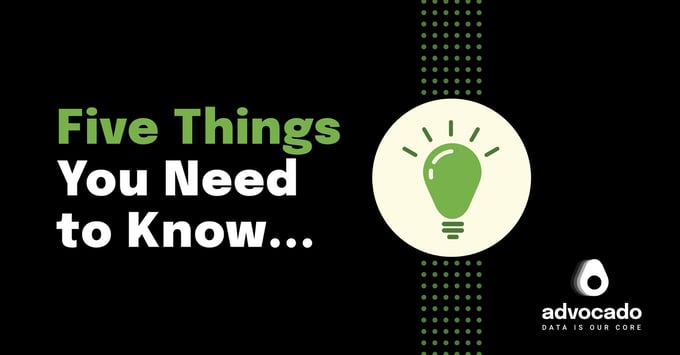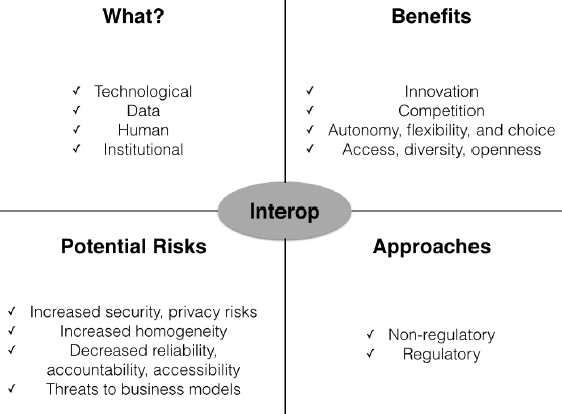By Harold S Geller, VP of Strategic Development, Advocado - An agency veteran driving industry relationships and spearheading new strategic partnerships.

This week, I attended the IAB Tech Lab’s “Advanced Television: The Quest For Universal Addressability” event in New York. It was a fascinating event where A Multi-Year Advanced TV Roadmap To Modernize The Fragmented TV Landscape was kicked off (here is the detailed press release).
To start with, “Advanced Television” refers to anything that is not traditional, over-the-air broadcast TV. It represents the move beyond demos to more precisely distribute, target and measure TV content across households and devices. In other words, advanced Television reflects the broader move away from legacy television and toward cross-platform content distribution and using data to inform campaigns.
Here are the five things I believe were top of mind at the end of the day:
💡 Making progress in the Advanced Advertising space will take collaboration and focus.
- Takeaway: Though the IAB Tech Lab and its members are leading the effort relating to the challenges, work from other trade groups is being leveraged, and may need to be advanced. The initial proposal for this work calls for the use of watermark standards that were developed by the Advanced Television Systems Committee (ATSC) and commercial opportunity signaling standards from the Society of Cable Telecommunications Engineers (SCTE).
- Why it matters: The work that needs to be done in this space is not only a call to action for the Advertising and Media Publishing sectors, but needs the collaboration of engineering, measurement, and consumer electronics communities.
💡 Watermarking is an important component of Advanced Advertising
- Takeaway: The advertising industry has historically seen Automatic Content Recognition (ACR) as predominantly the use of Fingerprinting (aka Passive ACR). In truth, ACR includes two technology “families” that can work together: Passive, and Active ACR which is watermarking. As part of this initiative, the industry needs to do a diligent evaluation of the uses of ACR and lay out the applications where Active and Passive ACR can be best deployed. This initiative calls for a variety of use cases supported by the use of the ATSC A/335 Video Watermark for addressable advertising.
- Why it matters: Among other things, the use of video watermarks enables frame-accurate ad replacement to increase addressable inventory in linear media. This frame-accurate ad replacement is critical to an excellent consumer experience with advertising (the consumer will not see any part of the ad that is being replaced), and allows for better management of commercial pods. There does need to be an evaluation of the use of watermarks for audience measurement, since the current guidance from the Media Rating Council (MRC) requires that watermarks be “acoustically detectable” by an external device (i.e. audience meter, or smartphone) to be certified for measurement use cases. This guidance relates to the historic use of audio watermarks in the area of measurement. In addition, parameters such as: security and universal detectability of the watermark, availability of embedding / detection software, and interference with other watermarks must be taken into account.
💡 The result of this initiative will be increased Interoperability
- Takeaway: Interoperability is not just about systems talking to each other, the main purpose of the theory of interoperability is to help define the optimal level of interconnectedness and to lay out a path for achieving it.

Diagram from: Urs Gasser, Interoperability in the digital ecosystem,
International Telecommunication Union (ITU) 2016
- Why it matters: This initiative will establish a robust baseline of best practices, connective tissue, and metadata requirements. A key component of this initiative must be robust educational efforts, and iterative documentation releases, as well as progress updates to all the communities impacted by this initiative. The important message of this, and frankly any standardization initiative, is that progress can be made, and innovation can take place above the standardization baseline. However, the baseline must be flexible enough for it to be universally adopted and respected by the impacted parties.
💡 If we think of measurement as a person, we are now in the awkward teen years. But it will eventually grow up to be a productive, stable adult.
- Takeaway: This excellent quote from Elsa Blumberg VP, Analytics & Insights at DIRECTV is an astute observation related to the state of measurement in Advanced Advertising.
- Why it matters: As this Advanced TV initiative progresses in the area of automation, and the technological underpinnings surface, the measurement conversations will require deep consideration as near universal 1:1 messaging becomes the norm in both linear and on demand experiences. Though audience measurement is a key element of the media landscape, there must be an increased focus on Attribution and outcomes as more media is being categorized as performance based.
💡 It's all TV
- Takeaway: Consumers don’t see silos of Traditional media, Digital Media, Advanced media, etc. They see content, and we can debate the definition of “TV” as a lean back experience, or consuming long form content, or even the granular consumption methods and platforms that people can interact with. We must always remind ourselves that Advertising has 3 goals: To Inform, Persuade, and / or Remind.

- Why it matters: Marketers must be able to reach consumers where they are, in a manner that presents the brand in the best light possible. A 2021 Merkle survey found that about half of adult US internet users said that when brands use their data in advertising, it helps them discover (50%) and find (49%) products and services that interest them—but 44% said this often feels invasive. We must strive to make advertising less invasive. We must see initiatives like this one as fundamental to making it easy to implement ad support, as new content consumption methods emerge. Marketers' advertising budgets should not fall behind consumer media consumption trends. In fact, when done right, initiatives like this one should support new, innovative, and desirable ways for people to consume and interact with ad supported content.